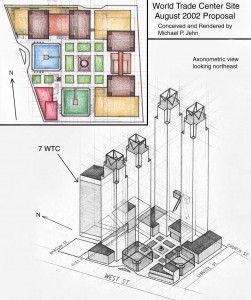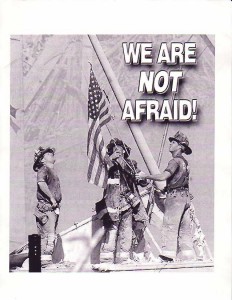On this the 13th anniversary of the September 11th tragedy, the Roy Rosenzweig Center for History and New Media is proud to launch a newly upgraded and redesigned site for the September 11 Digital Archive (911DA). The new site boasts improved access to the archive’s collections and, more importantly, increased stability for the materials.
A National Park Services’ Saving America’s Treasures grant has made it possible to migrate the materials from their original digital repository to the most recent version of Omeka. The result is that the materials are significantly easier to navigate, browse, and search. Additionally, a range of video collections are available that were not being served previously. The site offers range of data feeds (RSS, ATOM, XML, JSON), and eventually we will be offering API access for researchers and developers who would like to explore the collections in new applications and interfaces.
For the past three years, Jim Safley has painstakingly engineered and executed the complex work of this data migration. As a veteran of the project, no one knows the collections the way that Jim does, and his careful attention to detail has assured the integrity of this data as it has made its journey from a labyrinthine hand-coded database to the standardized home in Omeka. Then, Sheila Brennan guided Ben Schneider and Jeri Wieringa as they added additional collection description, massaged the collections into their current organizational structure, and themed the site with the current design. These members of the 911DA team are only the most recent additions to a staff list that stretches back a dozen years and includes Dan Cohen, Tom Scheinfeldt, Marty Andolino, Joan Troyano, Rikk Mulligan, and our many collaborators at the American Social History Project/Center for Media and Learning at the City University of New York’s Graduate Center (ASHP/CML) including Fritz Umback and Pennee Bender, under the direction of Joshua Brown and Steve Brier, who were RRCHNM’s partners on this work from the earliest days.
The September 11 Digital Archive originated as an off-shoot of ECHO: Exploring and Collecting the History Online project, funded by the Alfred P. Sloan Foundation, which experimented with new means to collect and preserve the recent history of science, technology, and industry. In the aftermath of September 11, 2001, RRCHNM, again with support from the Sloan Foundation, partnered with our colleagues at ASHP/CML to turn the emerging techniques toward the effort to preserve the collect, preserve, and present the wide range of primary source materials generated by and in response to the events of that morning, especially born digital materials. In February 2002, the first iteration of the 911DA launched with a web portal that made it possible for ordinary people to contribute their stories, upload digital materials, and explore other people’s stories. The site drew in essential contributions channeled through our partners at the Smithsonian’s National Museum of American History, the Library of Congress, The American Red Cross, The American Association of Museums, The Museum of the City of New York, The Brooklyn Historical Society, The New-York Historical Society, The Middle East and Middle Eastern American Center at CUNY, Columbia University, New York University, The Museum of Chinese in America, and many others. In September 2003, the Library of Congress accepted a copy of the collection as it stood at that point as its first major digital accession.
In the intervening years, the archive has amassed 150,000 digital files: stories, photographs, digital art images, emails, voicemails, videos, animations, official documents, and oral histories. Together these materials offer a deep record of the immediate aftermath of the events in New York, Arlington, and Shanksville, and their subsequent shifting historical memory, and have been at the heart of much of the existing scholarship on September 11th. At the 10th anniversary of the attacks, RRCHNM reopened the collecting portal and it will remain open to capture public reflections into the future.
For RRCHNM, the 911DA is a marquee project that is at the root of much of our subsequent work in digital public history and software development. As our first major collecting project, the archive directly lead to our work around hurricanes Katrina and Rita in 2005, and the eventual development of Omeka as a software platform that could offer libraries, archives, museums, and humanities scholars an easy way to collect, preserve, and present evidence of the recent past. As we mark this next phase in the life of the 911DA, we hope that you’ll revisit the collections to explore what they have to tell us about the events of that September morning, but also with an eye to how important this archive has been to the development of digital history more generally.


 We at RRCHNM continue to expand the resources in the
We at RRCHNM continue to expand the resources in the




